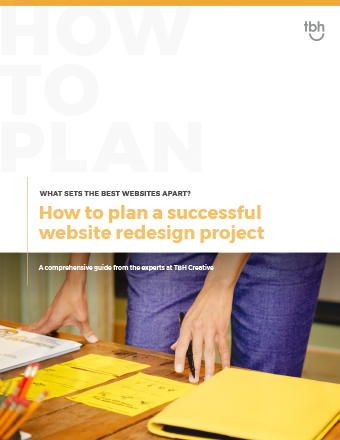It seems like a simple statement: Know your audience. One of those concepts that’s so obvious you shouldn’t even have to say it. But many people charge forward with their website design without taking the time to know their audience. When that happens, the result is almost always going to be short-lived.
When you don’t design a website for your audience, you won’t achieve your goals.
You might be saying “I already know my audience.” You most likely do… to some extent. When was the last time you asked a customer what they wanted? Do you know their Internet habits? Do your clients use smart phones? Twitter? What do they like to read? All of these questions can help give you a current perspective on how your audience uses your website and what they want from it. All of those questions can help you create a more effective online presence – a presence that makes your organization shine.
This article is part of the Complete Guide to Planning a Success Website Redesign Project.
Rather than trying to design, develop or write for a rough idea of your audience’s needs, consider creating a persona for each of your target markets. A persona is built on demographic research, client interviews and observations and serves to personalize an audience segment. These personas give you a specific target on which to focus your message, applications and design. They help you create a website that truly speaks to your audience and addresses their concerns. They become the spirit of the website and keep you focused on the end-user.

What sets the best websites apart?
When should you build an audience persona?
You should begin defining your target audience in the early planning phases of the project. The audience personas will be your initial definition of each target market and, as such, will guide your decisions about features, functionality and message points. At your discovery meeting, we recommend you take some time to define 2-5 market segments. If you are in healthcare, those segments could be Patients, Healthcare Professionals and Relatives of Patients. If you are in education, those segments might be Students, Academic Staff, Parents and Media. You should be able to define your market segments fairly easily based on past market research, client demographics and the knowledge of your sales and marketing staff.
How do you build an audience persona?
Make a list of 3-5 contacts for each market segment. Now it’s time to do some interviews. Build demographic profiles and do some research into the habits of those demographics. If you’re able to bring a group together for a structured focus group, that’s great. Ultimately your goal is to reach out to these individuals and learn more about their habits and daily work lives.
Sample Interview Questions:
- Age
- Gender
- Occupation
- Education
- Home Life
- Lifestyle
- Leisure Activities
- Work Environment
- Do you own a smart phone or tablet? How often do you use it? What do you use it for?
- Web Usage: How often are you online? What are your favorite sites and why?
- Web Competency
- Frustrations with the Web
- Where do you get information? Both online and offline resources.
- What kind of information is hard to find?
- What do you think of our current site?
- Is there anything difficult about using our site?
- What do you typically do when on our site? What do you wish you could do?
Once you have these questions answered, you’ll compile them into one persona for each segment. You’ll find commonalities among the interviews that you can use to create a narrative that represents each segment. Name your person and find a picture to represent him or her. Keep the persona document to one page per person so they are easy to read and remember. Consider hanging them around the room when you are in a development or design meeting to help keep your market at the forefront of any decisions. Don’t be surprised if you find yourself talking about the personae as if they were real people once you get deep into the project. Keep them top of mind and they will serve you well.
Real life application: Indiana University Public Policy Institute (IUPPI)

At the initial discovery meeting, IUPPI knew who their target markets were but realized they didn’t necessarily know how each of those targets interacted with their website. This is a common problem that is effectively solved by developing audience personae. IUPPI gave TBH Creative a list of key contacts within each market segment.
We then interviewed those contacts, researched people with similar demographics and job titles and pulled all of that data and commentary together to create three distinct individuals. Interestingly, they each want to use the site in ways that can’t be done currently – instantly helping to define the applications and features that will go into the new website. The project is still in development but it is already becoming a more robust, targeted website because of what we learned from the audience persona process.
Technology, design, content… all are more effective when created for a specific audience. Personae don’t stand alone but they do serve as an excellent guide. TBH Creative is a website strategy company—located in Carmel, Indiana—that serves Indianapolis and the greater central Indiana area, as well as other locations remotely.
TBH Creative is a website strategy company—located in Carmel, Indiana—that serves Indianapolis and the greater central Indiana area, as well as other locations remotely.

